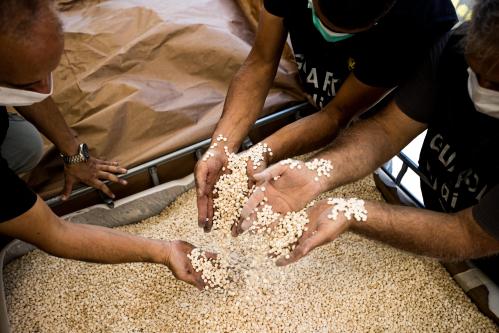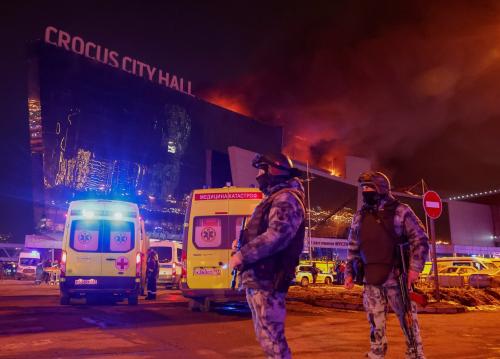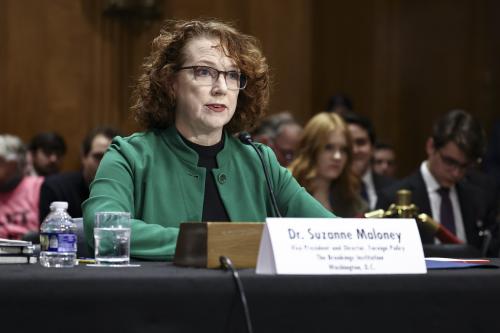Much as this June’s failed terrorist attacks in London and Glasgow focused attention on the participation of doctors and other professionals in jihadist terror, the plot disrupted in Germany this week seems certain to put the spotlight on another key group within violent Islamism: converts.
We don’t know much thus far about Fritz Gelowicz or Daniel Martin Schneider, the two German converts who were apprehended earlier this week along with Adem Yilmaz, who has been identified as a Turk. Another seven conspirators, about whom very little has been released, are also being hunted. But the hundreds of gallons of concentrated hydrogen peroxide—useful for bomb-building—they acquired, and the fact that, according to German officials, they had managed to train with the pros in Pakistan suggest that these operatives were, as one U.S. official put it, “the real deal.”
That may surprise people who have viewed the converts as being the oddest of the oddballs inside al-Qaida’s big tent. There have been grounds for such thinking: Among the most famous are Richard Reid, the oafish would-be shoe bomber, and Jose Padilla, the former fast-food chicken flipper whose ability to construct a dirty bomb, as touted by former Attorney General John Ashcroft, was never proved. But to write them all off as misguided dullards would be a mistake. That there are so many of them tells us something important about the movement, because some are highly competent and have real operational advantages compared with other radicals.
Their numbers are indeed astonishing. Converts have been involved in jihadist activity since before al-Qaida was fully formed. The “TERRSTOP” conspiracy to blow up landmarks and tunnels in New York City in the mid-1990s included two converts, Clement Hampton-El, an African-American who had been to Afghanistan, and Victor Alvarez, a dimwitted janitor turned gofer for the cell. (Though that conspiracy landed the “Blind Sheikh,” Omar Abdel Rahman, in jail, a connection to al-Qaida was never asserted.) In Osama Bin Laden’s empire, converts have always been well-represented. Wadih el-Hage, the Saudi’s personal assistant and, later, the architect of the East Africa cells that carried out the 1998 embassy bombings, came from a Lebanese Maronite family. The American Taliban, John Walker Lindh, certainly had no problems being accepted in al-Qaida circles. More recently, Californian Adam Gadahn, aka Adam Pearlman, aka Azzam the American, has become a blogosphere celebrity as the English-language voice of al-Qaida.
Well before the German bust, converts were turning up regularly in European terrorist operations. In the 1990s, several French converts, including brothers David and Jerome Courtailler, fought in Bosnia and later turned up in jihadist activities. A German, Christian Ganczarski, became a significant al-Qaida operative and was linked to a 2002 bombing on the Tunisian island of Djerba. The Walters brothers, Jason and Jermaine, sons of a U.S. serviceman and Dutch mother, were members of the Hofstad gang, which included Mohammed Bouyeri, the Dutch-Moroccan assassin of film director Theo van Gogh in 2004. Jamaican-born, English-raised Germaine Lindsay was one of the four members of the cell that carried out the Tube attacks in London in 2005. In November 2005, Muriel Degauque, a 38-year-old Belgian baker’s assistant and former Catholic, became the first female Muslim suicide bomber from Europe when she attacked a U.S. patrol in Iraq, wounding one soldier.
If that list doesn’t suffice to make the case that radical converts represent a real danger, the example of Dhiren Barot, an Indian-born British-raised convert from Hinduism known as Issa al-Hindi, ought to clinch it. Barot carried out the surveillance of the New York Stock Exchange and the Citigroup Building in New York City and the International Monetary Fund in Washington, D.C. Intelligence officers I spoke with described the reams of material he supplied as some of the highest-quality work they had ever seen. Barot, fortunately, is now serving a 30-year sentence in a British jail.
One might have thought that terrorist organizations would be leery of converts and worry that they were unreliable or even suspect them to be moles. The opposite has been true. According to French sociologist Olivier Roy, 10 percent of al-Qaida’s soldiers in the global jihad are converts, and in France the number might reach 25 percent. Roy takes this as an indicator of the group’s globalized nature, “because a convert is not motivated by his or her culture at all. He is not motivated by the political life of his or her country. He’s motivated by joining something global. Al-Qaida is made of born again [Muslims] and converts who join the global jihad. One day they go to Bosnia and another to Chechnya, or to Kashmir, or to Afghanistan, or to Fallujah.”
Moreover, the phenomenon of conversion plays an important part in al-Qaida’s cosmology. When the group’s propagandists talk about its ultimate victory, the conversion of the Christian West is often mentioned as a major milestone. When the organization wants to show it is on a roll, it also may refer to the current growth in conversions. In a video that aired on Dec. 13, 2001, Bin Laden claimed that the 9/11 attacks had been “understood by both Arabs and non-Arabs. ? In Holland, at one of the centers, the number of people who accepted Islam during the days that follow the operations were more than the people who accepted Islam in the last 11 years.” Bin Laden also relayed a report he had heard regarding an Islamic educator in America who claimed, “We don’t have time to keep up with the demands of those who are asking about Islamic books to learn about Islam.” Having so many converts in its ranks is clearly a mark of achievement.
Bin Laden’s boasts of mass conversions are mostly bluster. But while good data is hard to come by, scholars and clerics suggest that the numbers are up significantly in the United States and Europe. According to a German government study cited in Der Spiegel, between mid-2004 and mid-2005, 4,000 Germans converted to Islam—about 13 times the rate just three years earlier. A sociologist quoted in the article says some see conversion to Islam as a dramatic act that makes them “stand out from the crowd.” Though negligible in the larger scheme of things, the chance that a convert will turn jihadist is much greater than that of someone born Muslim. That suggests that for those who turn violent, the act is more a matter of standing against the crowd rather than standing out from it. Radical Islamism seems to have become the magnet for some of the world’s angriest people who feel the universe is out of joint and must be changed. For these converts, it is an ideology of revolt that is more attractive because of its crystalline hatred of the status quo than its theology.
The “zeal of the convert” may be a cliché, but it is a true one that helps explain the presence of so many former non-Muslims in jihadist terror—and why terrorist leaders find them so useful. Another reason is that whether they have formal profiling programs or not, Western law-enforcement officials are inevitably going to be less likely to suspect someone who looks like one of their own. (Fortunately for the Germans, Fritz Gelowicz had distinguished himself as a radical years ago and had run-ins with the law.) Abu Musab al-Zarqawi understood this and called for the creation an army of “white-skinned” mujahideen. It appears that may be happening without any help from the Iraqi jihad’s dead emir.



Commentary
The Convert’s Zeal: Why Are So Many Jihadists Converts to Islam?
September 7, 2007